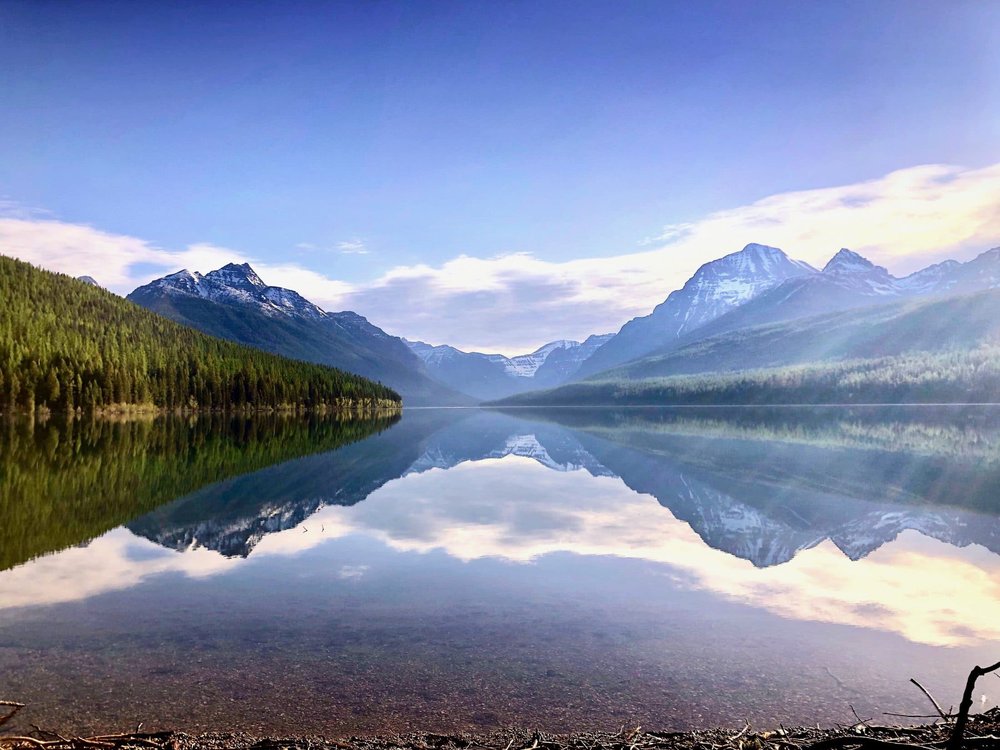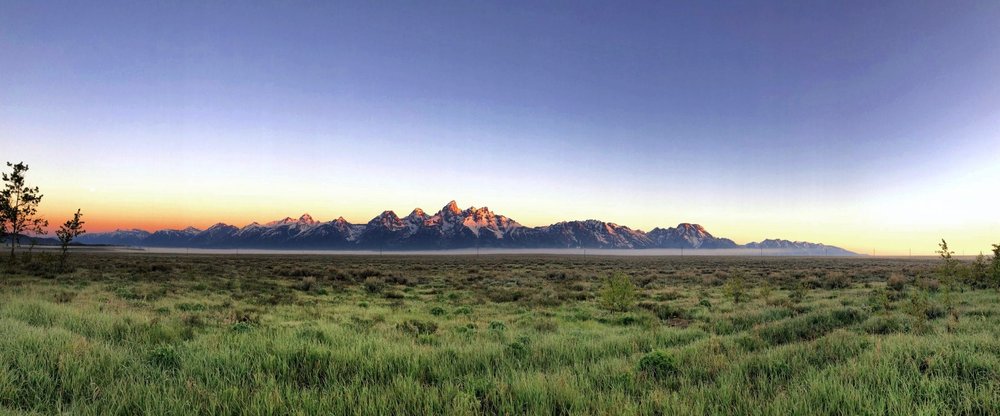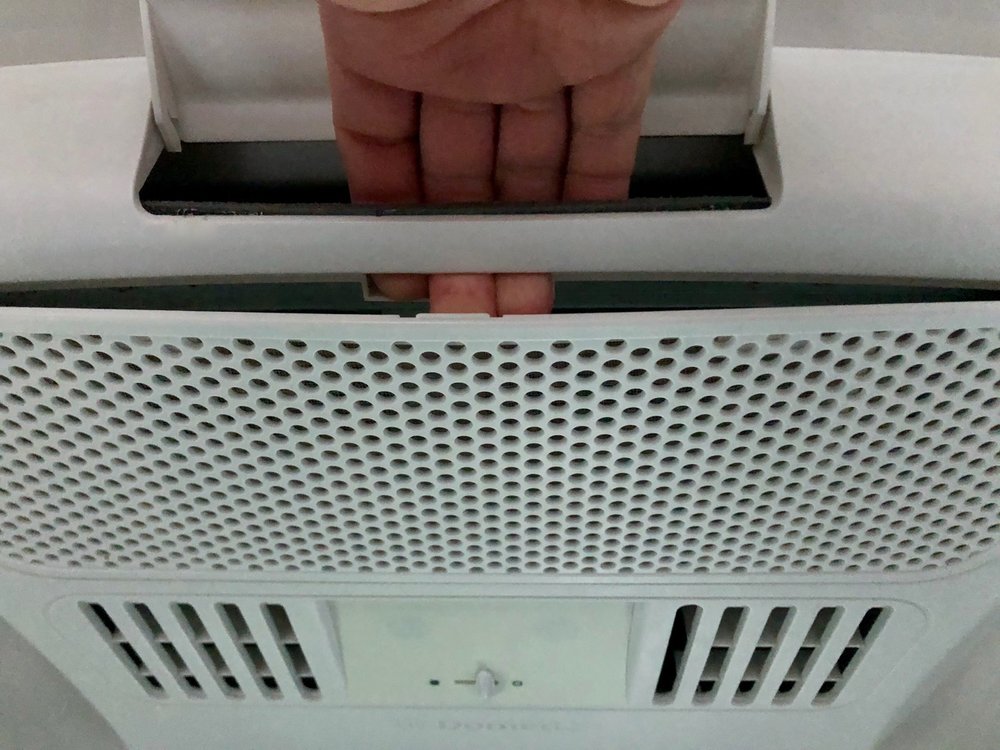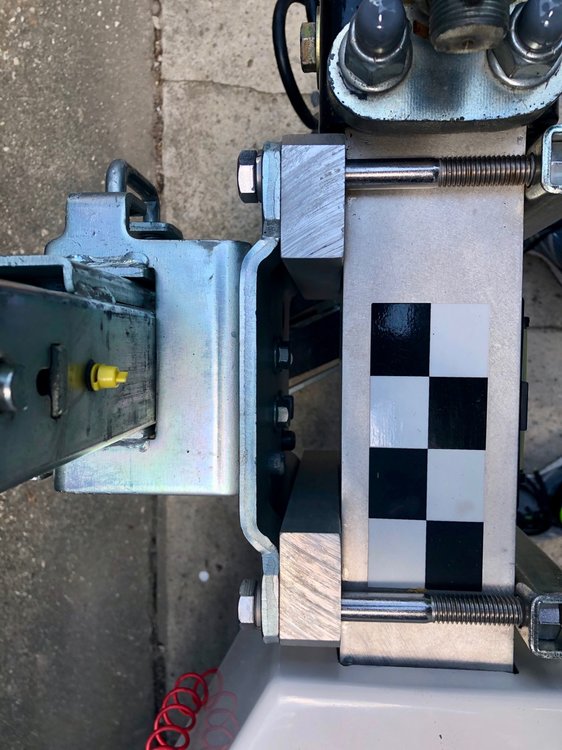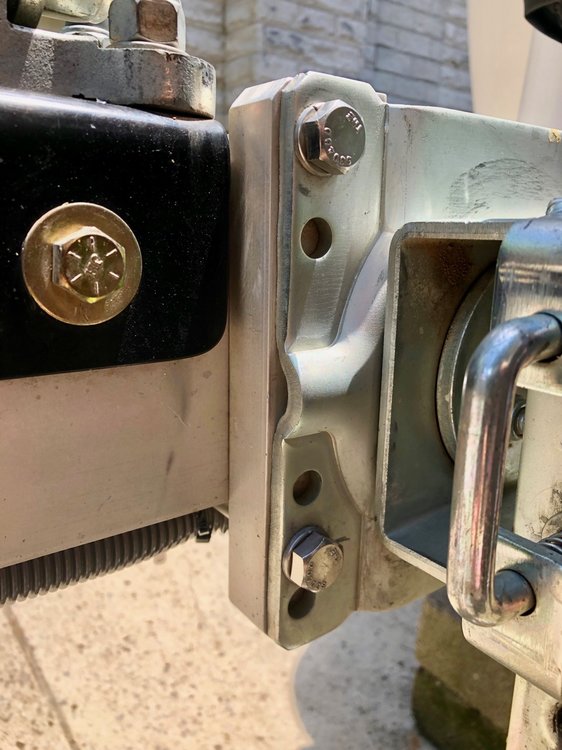-
Posts
3,835 -
Joined
-
Last visited
-
Days Won
212
Everything posted by Overland
-
This is the type of hose that will fit your Ollie, and I guess you’d need this as well. I’d recommend getting more than one hose, to give you some flexibility in setting up your campsite.
-
I think if you go by the book, the answer is yes. However, I’ve always questioned the effectiveness of friction-type sway control; and, especially given the difficulty that people have with the friction sleeve on the Anderson, I think that were I ever to use the hitch, I might just be tempted to grease the cone and be done with the sway control aspect. But someone who knows more about the hitch would probably want to chime in on the advisability of that.
-

Very Interesting - new Oliver-type class B motorhome
Overland replied to SissyBoyFloyd's topic in General Discussion
Looks nice but Earthcruiser might have something to say about their claim of being the first/only class b with a composite interior. -

Need picture of bathroom without shower pan
Overland replied to Townesw's topic in Mechanical & Technical Tips
I don’t know if this will help or not, but you can see the floor of the shower at the back - it’s just a raised, flat floor over which they place the pan. -
No concerns about the road apart from it being super bumpy at the time. But as I said, apparently they regraded it the moment we left. We were able to pass a couple other, wider, campers coming the opposite direction with no problem. At the start of the road, there were a few climbing twists, and maybe if you met someone there it might be tricky, but I really don't remember. The road was also dry, though I don't remember it being rutted, only bumpy. The lake was about as calm as that photo the whole time we were there. There were some morning kayakers each day, but no motorized boats. The only thing we saw fishing were ospreys. No bugs at the campsite, but the two hiking trails we took were pretty buggy. We were there third week of May, so later in the summer I'm sure it's more crowded and buggy.
-
In Glacier, we've stayed at Apgar, St. Mary, and Bowman Lake. Avoid Apgar - nothing but loud kids, generators, and mosquitos. St. Mary was pleasant, and well located for seeing the east side, though I've heard that Two Medicine is better. There's a scenic road to St. Mary with signs telling you your trailer is too long. Don't read them. Though we prefer the east side of the park, Bowman was our favorite campground - almost empty, with a gorgeous view across the lake. Had a big grizzly come through the campsite one morning. It's a trek to get to, and the road was awful at the time though they've regraded it since. If you go there, be sure to stop by the general store at Polebridge for breakfast or lunch. There's also a place just north of Glacier called Canada, which has nice places to camp. At Yellowstone, we stayed at Fishing Village, which was a parking lot, but it was our only choice and far better to stay at one inside the park than to fight traffic coming and going. There's a little jewel of a campground in Lamar Valley, called Slough Creek. It's first come, but worth a shot. It's quiet, with campsites along the water. As a bonus, there's usually a resident wolf pack that dens on the hillside across the creek. Bring a spotting scope. The little campground at Lewis Lake looks nice, too. Buffalo Bill SP in Cody has nice campsites if you're going through there. At Teton, I like Lizard Creek and Gros Ventre over the busy marina CG's like Signal Mountain and Colter Bay. We didn't drive through Headwaters when we were there, but from the aerials, it looks nice and would be well located for both Teton and Yellowstone. If the park sites are full, then there's a free USFS campground here. The sites on the upper loop road (30340) are better than the lower sites. Primative, but probably the best views of the Tetons to be had.
-
This thread was originally a double post and his question was answered here (but since the question was from before Oliver offered these toilets, there aren’t many replies.) You’ll find quite a few threads on the subject if you search for ‘natures head’ or ‘composting toilets’, any one of which will be more informative than this one. ;)
-

Dometic AC filter replacement (2019 model)
Overland replied to CedarForks's topic in Mechanical & Technical Tips
That's correct. I couldn't find the previous discussion about this, so perhaps I saw it in another forum, perhaps in a dream. But the piece I remember was a black plastic frame holding the foam and it snapped into the four, otherwise useless connectors on the back of the screen piece - very similar to this, but the same shape as the gill and screen. Does anyone else remember this? -
It’s not normal for a factory model but this is the first I’ve heard of anyone doing a retrofit. My first thought is that the rivets might not be tight enough and maybe that’s where the creaking is coming from.
-

Dometic AC filter replacement (2019 model)
Overland replied to CedarForks's topic in Mechanical & Technical Tips
That's the same as what I have, but apparently, there's another piece that some people have. I'll have to dig up the thread, assuming it was here that I remember seeing it. It was a foam filter in a plastic frame that snapped to the screen. -

Dometic AC filter replacement (2019 model)
Overland replied to CedarForks's topic in Mechanical & Technical Tips
Mine didn't come with one either. There was a discussion here some time ago and the filter is supposed to snap to the back of the grill/screen, or fit between the two. I could never figure out what part to buy and so I've been without - just cleaning the screen. It never seems to get dirty, which should probably tell me that I need to get the filter. -

Looking at LE2 for Fulltime - which of my concerns are valid?
Overland replied to WhatDa's topic in General Discussion
That seems silly, considering what's involved (or isn't). -

Dometic AC filter replacement (2019 model)
Overland replied to CedarForks's topic in Mechanical & Technical Tips
Yep, sorry I wasn't clear - remove and wash them both. -
Man, you'd think after 11 years that little trailer would have grown at least and inch or two. You must have gotten the runt of the litter :P .
-

Blue Sea Systems Circuit Breaker Panel
Overland replied to Steve-Gwenne's topic in Ollie Modifications
The breaker panel doesn't have fuses that need to be replaced. If a switch should pop, just flip it back to its normal position. Should it do so repeatedly, then you should leave it off until you've identified and corrected whatever is causing it to blow.- 1 reply
-
- 1
-

-
Can you tell us what exactly you mean when you say ‘connection verified’? My first thought is that the surge suppressor has found a fault of some sort. Can you check the display and confirm that it says E-0?
-
Funny I was just posting about theft deterrence in the McHitch thread. I seem to remember these being discussed before - or maybe it was a different brand but similar idea. I don’t know how you intend to use them, but personally I think for use while in storage, something like this is great - but it seems like bulky item to carry while traveling. The the center covers do come off - you have to take the wheel off, but once off, they pop right out. It’s possible that you could find a lower profile cover to use instead, or just go without.
-

Off Road Jack and Multi-Axis Hitch on an Ollie
Overland replied to Overland's topic in Ollie Modifications
One of the things we discussed back on the day (three years ago now?) was the theft deterrent advantages of the McHitch. Obviously, the hitch itself presents an obstacle to anyone wanting to steal a trailer with one installed. A would be thief could drag it away with chains, or remove the hitch and install their own - assuming they brought a drill press - but someone would have to be both prepared and determined to do either. And since my trailer is still in my possession, I can only declare the theory proven. Though now that Raspy is getting the same model, I’ll keep an eye on him. -

Dometic AC filter replacement (2019 model)
Overland replied to CedarForks's topic in Mechanical & Technical Tips
Open up the front vent, reach in, and push down on the filter. It will pop loose pretty easily. Then just rinse with soapy water and air dry. -

Off Road Jack and Multi-Axis Hitch on an Ollie
Overland replied to Overland's topic in Ollie Modifications
Everything is galvanized steel. As you can see in the close up with the flashlight, I will get a tiny amount of surface rust on the wear points of the pin and receiver, as well as on the u-joint when the trailer sits, but nothing serious. If you're more judicious than I am about applying some PTFE dry spray to the hitch, or if you store indoors, you may not even see that. The adapter I had made at a local fabricator, who worked from the drawing I made above. Oliver had it powder coated for me, but it's beginning to flake, so I need to remove it and have it redone. Maybe get it galvanized instead. Yes, grade 8 bolts throughout. -

Off Road Jack and Multi-Axis Hitch on an Ollie
Overland replied to Overland's topic in Ollie Modifications
If you can snap a photo of it, I'd like to see it. When I bought mine, I asked about the 6 tonne, and Joe told me that it was exactly the same as the 4.5 tonne, except had a larger shank, which he included. And the documentation I got with the hitch said that it was a 4.5 or 6 tonne model, depending on the shank used. The hitch itself is stamped 4.5 tonne. But the photo on their website for the 6 tonne is clearly a different hitch. So I'm curious which one you got. Not that it really matters, since @10,000lbs, the 4.5 tonne hitch is more than enough. -

Off Road Jack and Multi-Axis Hitch on an Ollie
Overland replied to Overland's topic in Ollie Modifications
On the hand brake, it's on my list of projects. Since I have the hydraulic brakes, I'll need to get a kit to make it work. When we've moved the trailer around without it, we're just sure to be extra cautious and diligent with placing chocks - just moving the trailer a bit at a time. -

Off Road Jack and Multi-Axis Hitch on an Ollie
Overland replied to Overland's topic in Ollie Modifications
No real concern. You can buy most spare parts off their website - gear assemblies, wheels, handles, etc. The jack weighs 41lbs, and I don't see why you can't use it on its own. It's just that if you have two, then you may as well take advantage of the ability to use both. I haven't tried using it to hold the tongue while camped, so I can't say for sure if it would feel more or less squirrelly, but I don't think it would. If anything, maybe less, because it's much sturdier. I think the problem you might run into is that the XO has less travel than the power jack. You can buy them separately here, or when you order the hitch, just specify the WD model. I have a hard wired backup camera. -
Lol, my wife likes to use the sparker on the cooktop and I prefer the lighters for the grill. And I don’t know how anyone cooks without a blowtorch. Chargers are in the bottom section of the nightstand drawer. That probably doesn’t help you.
-
So most are probably aware that I've had these since delivery, but I've never posted about them - much to the concern of some (lol). The hitch, as advertised, is from McHitch in Australia. It's one of their automatic hitches in the 4.5 tonne (of the metric sort) version. The jack is an XO 750, also from Australia. You have to buy the hitch directly from their factory, but you can find the jack here in the US. The hitch was $750 shipped; the jack, $250. (The hitch price may have been Australian dollars - I can't tell from their invoice.) To attach the hitch to the Ollie's tongue, you'll have to have an adapter made, like this: The hitch bolts into the adapter and the adapter bolts into the same two holes on the tongue as the Bulldog, making them interchangeable. The female portion of the hitch will mount directly to any ball mount. The jack also requires a bit of work. The bolt spacing on the jack's mounting plate actually aligns quite well with the Ollie's tongue, but if you mount it directly to the frame, then the wheel just doesn't quite clear when folded: And there's no room to scoot the jack forward. You can fold it back the other way, but then the wheel is far enough forward to hit the truck in a tight turn - So you have to make some spacers, or if the guys in service are still as unbelievably nice as they were when mine was being built, maybe they'll make some for you. The ones they made for me are cut from 1" aluminum: So that's what we're talking about and how it attached to the trailer, but people are probably thinking - What again? Why did you spend money on this? The hitch, first: a multi axis hitch allows much greater articulation between the truck and trailer when going off road. Dips and twists in the road that would otherwise bind up a standard ball hitch are no problem with a multi axis hitch. There's also zero possibility of the trailer coming loose from the truck, thanks to the safety pin. The typical problem with these hitches, however, is that most designs are very difficult to align, and as such are commonly only used on small trailers that can be manipulated into place by hand. The McHitch fixes that problem by being largely self aligning. All you do is line up the hitch laterally when backing up to the trailer, then adjust the trailer height to match the truck's, then back into the hitch and it locks itself in place. The McHitch has two locking mechanisms: the first is the lever bar that drops into the groove on the main pin. That both holds the pin and lets you know that it's attached. Then you slide in standard locking pin a safety. Here's a video of how it works: It really works as advertised, and I actually enjoy hooking up and unhooking because it's so dead simple and quick. The u-joint on the hitch is from a Land Cruiser, so it's easy to source should it ever start to wear out. Maintenance is just greasing the u-joint once a year and keeping the locking bar greased so that it moves freely. I was a bit worried when I greased the u-joint that the pin would droop, making it difficult to hook up. But so far the u-joint has maintained it's stiffness. And it gets so little wear relative to what it was designed to do that it may never loosen up that much. You can get a WD attachment for the hitch if you want - I don't have it, and so can't comment on how easy or difficult it would be to attach to the Ollie's frame. There's also a keyed lock for the safety pin. The caps on the u-joint mounts are magnetic, so I use the top one to hold a little Nitecore LA10 flashlight/lantern when hooking up in low light - The XO jack serves three purposes. First is that it absorbs the bump from when you back into the McHitch. The Ollie's jack isn't designed to take that kind of force, so over time, either the jack or its mount are likely to get damaged. And of course if you were to bump the trailer particularly hard, then you might just destroy the jack or its mount in one go. The second purpose for the jack is that it provides an easy way to line up the trailer vertically with the truck, which I'll explain later. And the final purpose is what it was designed to do - allow you to recover the trailer if it's stuck, or maneuver the trailer while not attached to the truck. The jack is very stout, and strong enough to support the trailer while being winched. I haven't yet gotten the trailer stuck enough to use it like this. (I've gotten it stuck once, but was able to use traction mats on the truck to get both it and the trailer back to dry land.) But I have used it to maneuver the trailer around in a tight campsite, and it works perfectly in that situation. Here's a video of the XO jack in action: Obviously, you want to use extreme caution when using the jack in that way. It doesn't take much of a slope for the trailer to get away from you. Likewise, you need to use caution if you use the jack while hooking up or unhooking your trailer. I leave the safety chains attached until I've fully unhooked the truck from the trailer and placed the weight of the tongue onto Oliver's jack. The bonus to using that method is that the XO jack remains set to the truck's height, ready to be hooked up again. When it's time to hook back up, you just lower the tailer down until the XO jack is taking the weight, and you're all set to hook up. In cases where you have to lower the trailer's tongue to level, then I first raise the tongue, then swing the jack forward or lift it using the height adjustment pins, and then lower the trailer down to level. Hooking it back up would then be the opposite of that.



